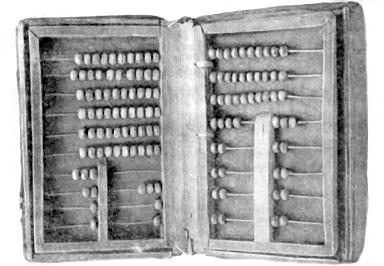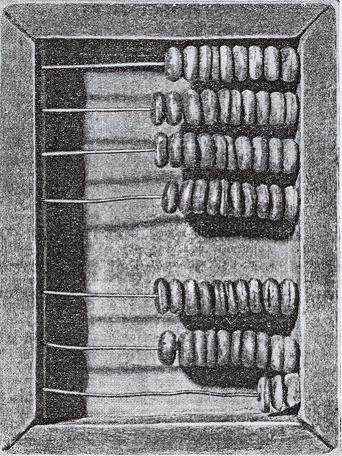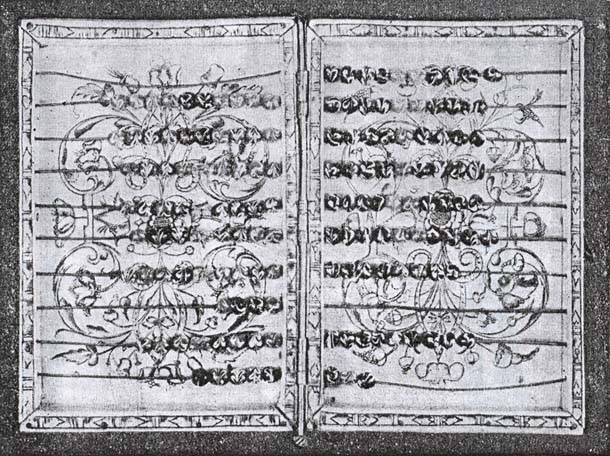


|
The first Russian stchoty were invented at the end of the 16th century. Most likely this was connected with a unified land tax appeared in Russia in the 15th -16th centuries. A taxation unit for land quality and quantity was called sokha. Thatís how the appellation soshnyi stchet (sokha counting) appeared. Especially for soshnyi stchet the so-called doschanyi stchet (calculation on board) was introduced. It was the first variant of the Russian stchoty. They differed greatly from the modern stchoty. In particular, they had four counting fields and incomplete rows with beads to work specially with fractional parts of sokha.
However, very soon a device with four counting fields was displaced by a simpler device with two fields. Later the quantity of incomplete rows was reduced. Some variants of doschanyi stchet from different original sources of the 16th and 17th centuries are shown in the pictures. They differed from each other by quantity of rows and beads, sometimes they were specialized for specific calculation problems.
The most ancient survived stchoty belong to the middle of 17th century. They consist of two parts. The left part has a counting field with 6 rows, with 10 beads each and two fields with incomplete rows (3, 2 and 1 beads). One of the fields with incomplete rows is used for sokha fractional calculation: 1/3, 1/6, 1/12 and 1/24. The second field is used for sokha fractional calculation: 1/2, 1/6, 1/12, 1/24 of sokha. So in the left part it was possible to execute arithmetical operations with the range from 1/24 to 1,000,000.
The right part of the stchoty consists of three complete rows on one field and 10 incomplete rows on two fields. The first field with incomplete rows was used for sokha fractional calculations: 1/4, 1/8, 1/32, 1/64. The second field with incomplete rows was used for sokha fractional calculations: 1/3, 1/6, 1/12 and 1/24. Therefore in the right part in was possible to execute arithmetical operations with the range from 1/128 to 1,000. In the 17th century stchoty became wide-spread around Russia. Government institutions and monasteries bought them. Private persons gave stchoty as present, and included them in their wills. So in 1670 the price of stchoty was not too high - only 12 kopeks. It was a rather reasonable price. The word stchoty appeared at first at the same time: it was mentioned in one of the documents in 1658. The further evolution of stchoty went in the direction of simplification and at the beginning of the 18th century lead to the almost modern variant. They had one counting field, but the quantity of rows could still vary.
And the last. There is a statement often met in literature: as if stchoty came to Russia from China. Of course, these devices have some similar features. But the evolution of Russian stchoty from the first most complicated device with four counting fields to there modern form doesnít leave any doubts. The Russian stchoty is evidently original invention. |









